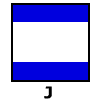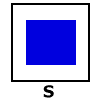Just how big is the Group?
According to Elysian Insurance, the total assets of International Group of P&I Clubs amounted to about USD 6.5 billion (including fixed assets) at the end of the 2004-05 insurance year. The Clubs' total income for the year ended 20th Feb 2005 was about USD 2.3 billion. We are told that the Clubs' free reserves for P&I are about USD 1.8 billion, which means that, as a group, the Clubs do not have a year's premium in reserve (a goal frequently expressed in the mid-90's when times were good). It also means that the Group, taken as a whole, would not qualify for A.M. Best's largest financial size category ("FSC XV"), which is reserved for insurers with policyholder surplus of more than USD 2 billion. The best-known American insurers, including AIG, Chubb, CNA, Fireman's Fund, Hartford, St. Paul Travelers and Zurich, are in category XV.
As a point of comparison, AIG's net income for the second quarter of 2005 was almost USD 4 billion, meaning that AIG earns almost 8 times as much as the Group. AIG claimed to have net tangible assets of USD 72 billion as of 31 Dec 2004, so does that mean it has at least 4 years of premium socked away? (Not surprising it has a lot more than the Group; none of the Clubs are rated as highly as AIG.)
The 13 marine P&I Clubs that make up the International Group of P&I Clubs generated 6% of market premiums for the London Market in 2006 according a survey by IFSL. Between them the group members provide liability cover for approximately 90% of the world’s ocean-going tonnage. Total net worldwide premium income of the UK insurance market reached £193.9bn ($401bn), up 16.2% on the previous year with Lloyd's generating 57% of London Market premiums, the company market generating 37% and P&I Clubs the remainder.
Gross premiums on the London Market were conservatively estimated at £24.3bn in 2006, down 9% on the previous year's record total due to a fall in non-marine treaty renisurance premiums on the company market. This was however nearly double the premiums generated in 1999, largely a result of a recovery in the reinsurance sector and an increase in capital from the US.


